Abstract
Sociodemographic correlates of drug use among the general household population may have less accuracy and utility for describing risk factors for drug use among nonhousehold populations like the homeless and transient. This analysis examines correlates of past year use of marijuana, cocaine, and needles among homeless and transient people in the Washington, DC, metropolitan statistical area (DC MSA) and discusses them vis-a-vis traditional indicators of drug use among the general household population. Data are from a study conducted in the DC MSA in 1991 that used a multistage sampling design and surveyed a random sample of 908 homeless and transient people ages 12 years and older. The analysis uses multiple logistic regression to assess the independent effect of demographic and other predictors on selected drug use measures among this population. Three key socioeconomic correlates of drug use among the general household population (educational attainment, employment status, and marital status) were nonsignificant predictors of drug use among the homeless. However, other factors were significant, including past year institutionalization, location within the DC MSA, and stage of homelessness. The age group at greatest risk for use of marijuana and cocaine in the past year were the homeless ages 26 to 34, but the oldest group (35 years and older) had the highest risk of needle use. Although men were more likely to have used marijuana and cocaine in the past year, there were no sex differences in the use of needles in the past year. Only past year use of cocaine differed significantly by race or ethnicity, with a greater likelihood among homeless blacks than among homeless whites.(ABSTRACT TRUNCATED AT 250 WORDS)
Full text
PDF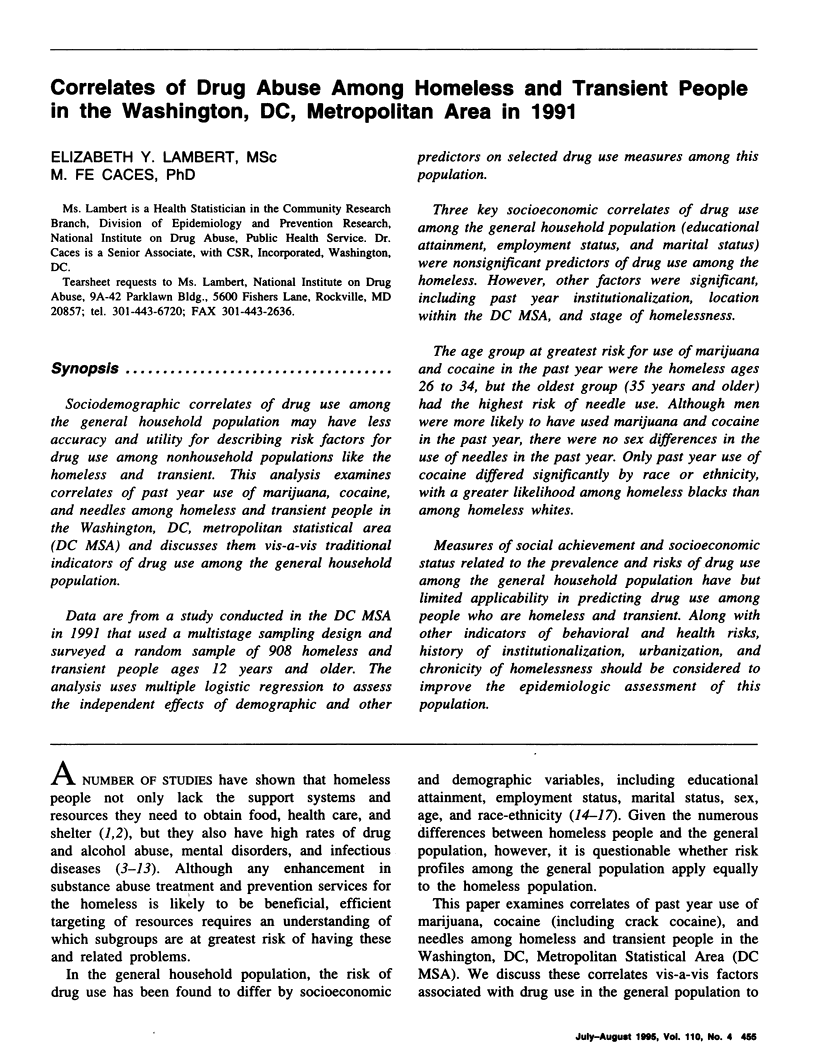
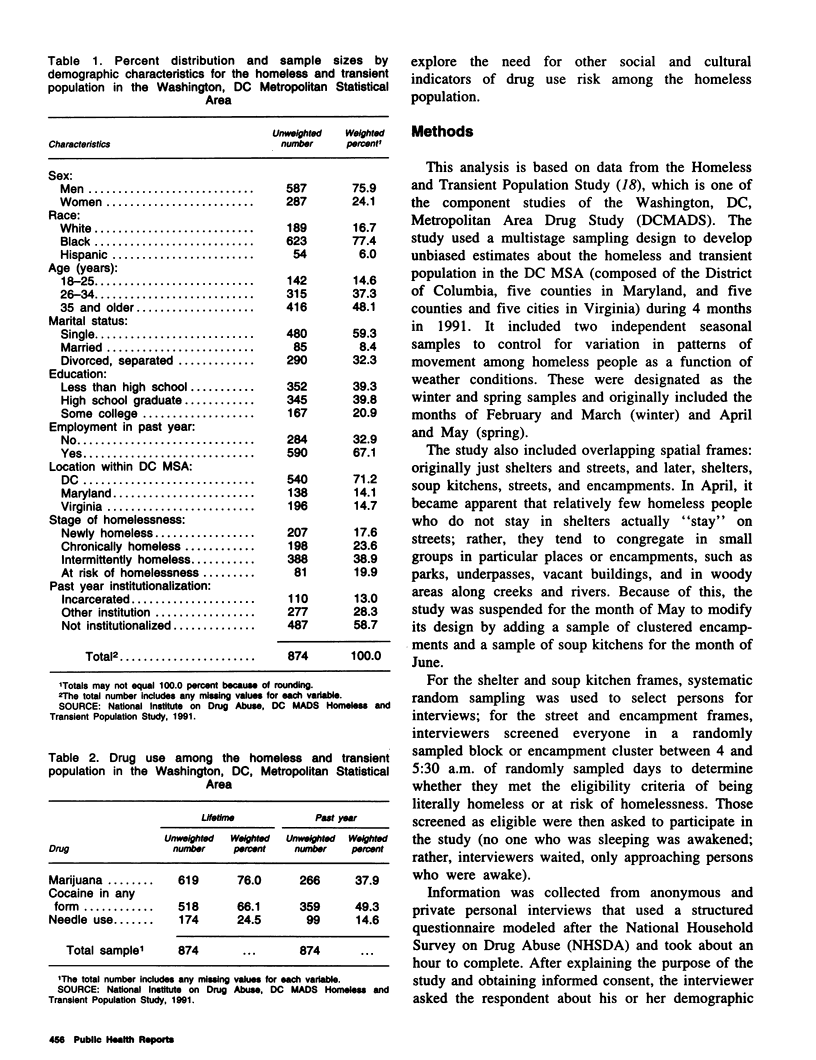
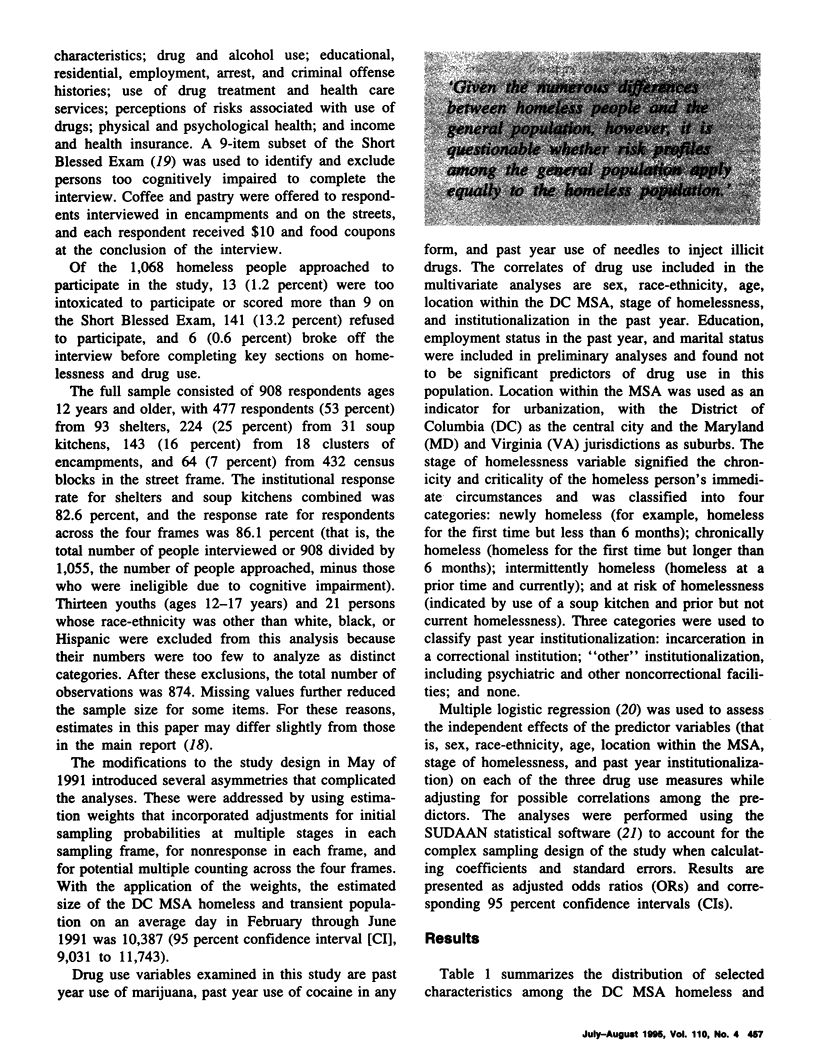
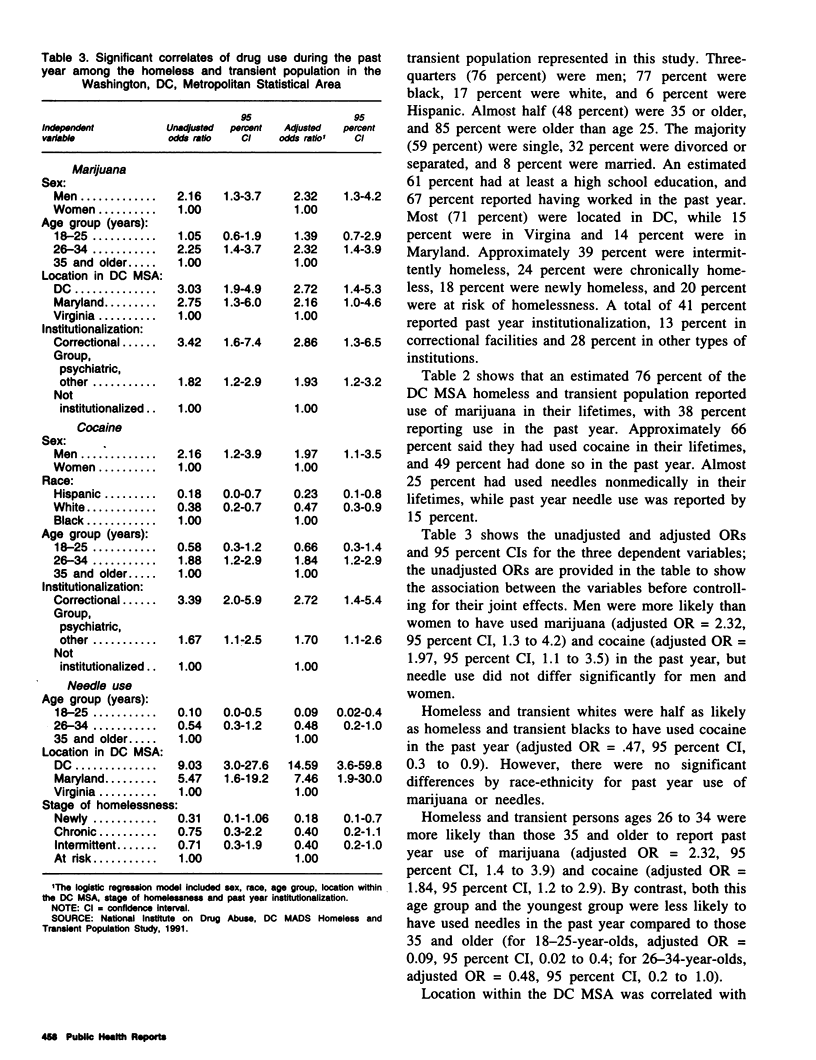
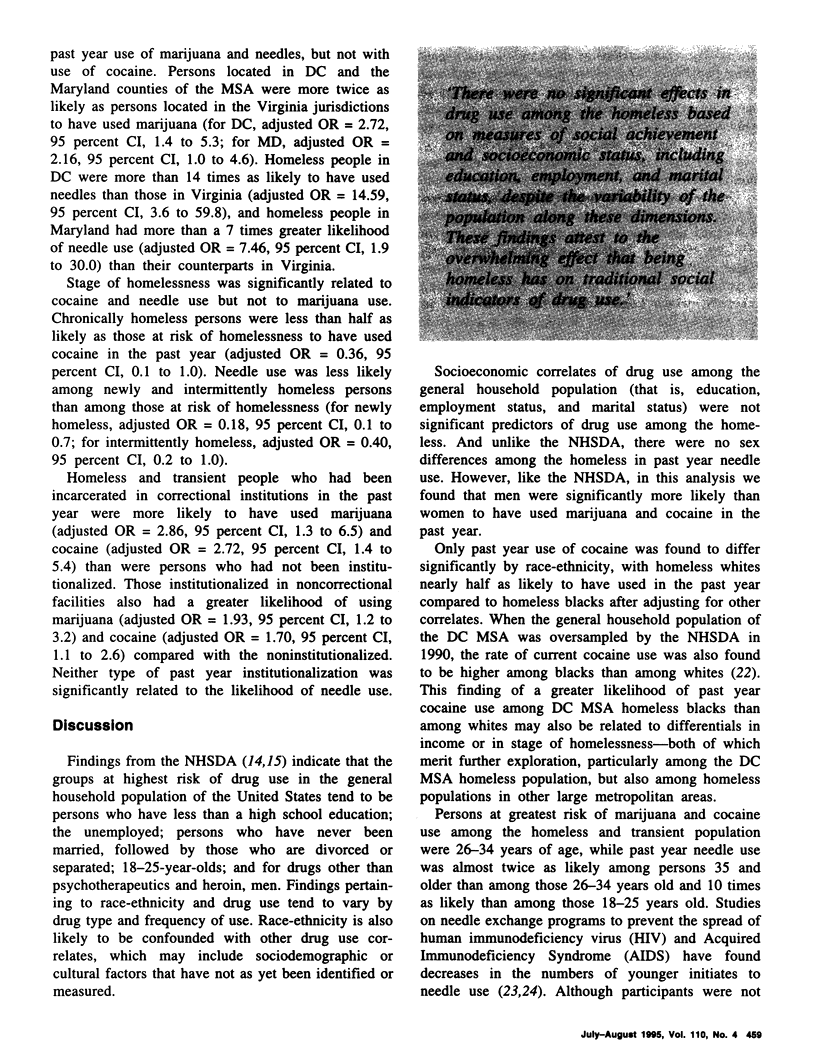
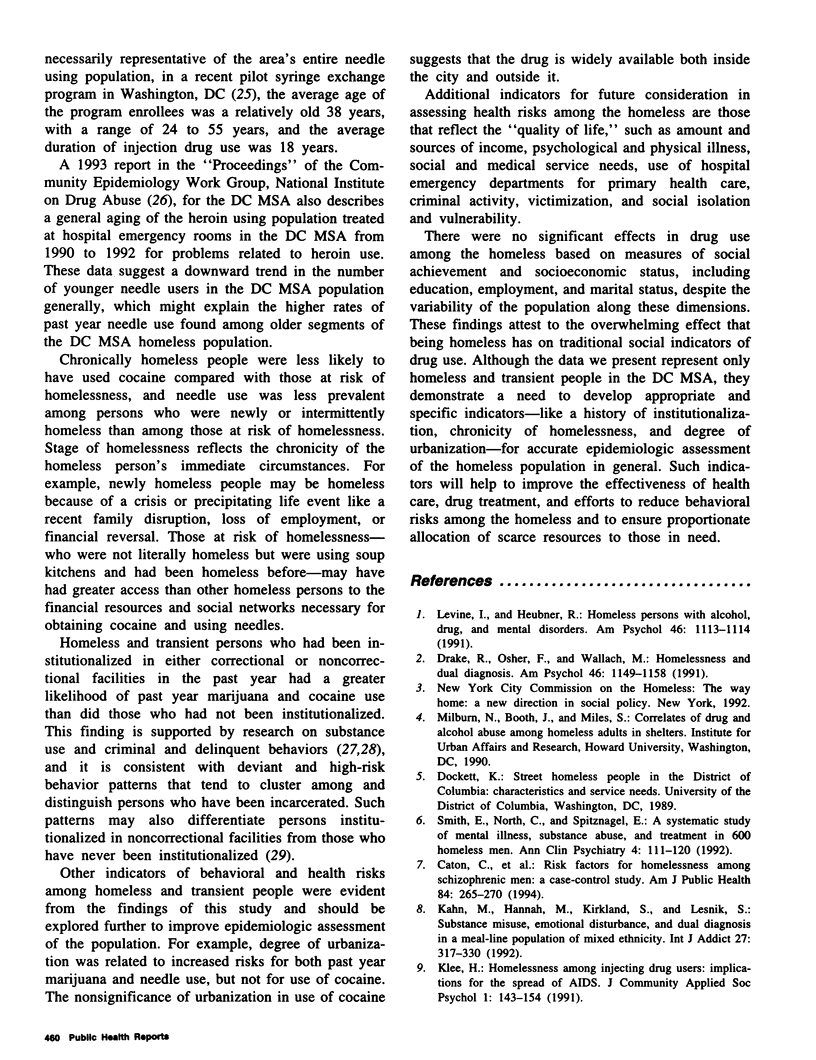
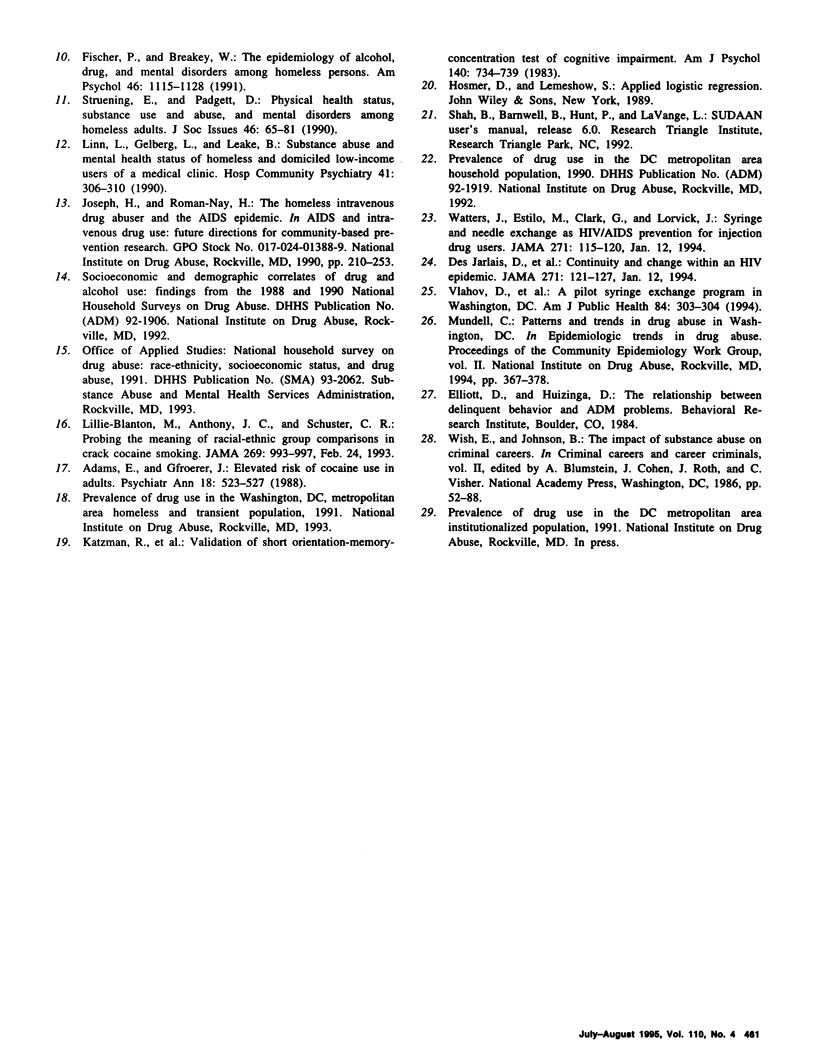
Selected References
These references are in PubMed. This may not be the complete list of references from this article.
- Caton C. L., Shrout P. E., Eagle P. F., Opler L. A., Felix A., Dominguez B. Risk factors for homelessness among schizophrenic men: a case-control study. Am J Public Health. 1994 Feb;84(2):265–270. doi: 10.2105/ajph.84.2.265. [DOI] [PMC free article] [PubMed] [Google Scholar]
- Des Jarlais D. C., Friedman S. R., Sotheran J. L., Wenston J., Marmor M., Yancovitz S. R., Frank B., Beatrice S., Mildvan D. Continuity and change within an HIV epidemic. Injecting drug users in New York City, 1984 through 1992. JAMA. 1994 Jan 12;271(2):121–127. [PubMed] [Google Scholar]
- Drake R. E., Osher F. C., Wallach M. A. Homelessness and dual diagnosis. Am Psychol. 1991 Nov;46(11):1149–1158. doi: 10.1037//0003-066x.46.11.1149. [DOI] [PubMed] [Google Scholar]
- Fischer P. J., Breakey W. R. The epidemiology of alcohol, drug, and mental disorders among homeless persons. Am Psychol. 1991 Nov;46(11):1115–1128. doi: 10.1037//0003-066x.46.11.1115. [DOI] [PubMed] [Google Scholar]
- Kahn M. W., Hannah M., Kirkland S., Lesnik S., Clemens C., Chatel D. Substance misuse, emotional disturbance, and dual diagnosis in a meal-line population of mixed ethnicity. Int J Addict. 1992 Mar;27(3):317–330. doi: 10.3109/10826089209068745. [DOI] [PubMed] [Google Scholar]
- Katzman R., Brown T., Fuld P., Peck A., Schechter R., Schimmel H. Validation of a short Orientation-Memory-Concentration Test of cognitive impairment. Am J Psychiatry. 1983 Jun;140(6):734–739. doi: 10.1176/ajp.140.6.734. [DOI] [PubMed] [Google Scholar]
- Lillie-Blanton M., Anthony J. C., Schuster C. R. Probing the meaning of racial/ethnic group comparisons in crack cocaine smoking. JAMA. 1993 Feb 24;269(8):993–997. [PubMed] [Google Scholar]
- Linn L. S., Gelberg L., Leake B. Substance abuse and mental health status of homeless and domiciled low-income users of a medical clinic. Hosp Community Psychiatry. 1990 Mar;41(3):306–310. doi: 10.1176/ps.41.3.306. [DOI] [PubMed] [Google Scholar]
- Vlahov D., Ryan C., Solomon L., Cohn S., Holt M. R., Akhter M. N. A pilot syringe exchange program in Washington, DC. Am J Public Health. 1994 Feb;84(2):303–304. doi: 10.2105/ajph.84.2.303. [DOI] [PMC free article] [PubMed] [Google Scholar]
- Watters J. K., Estilo M. J., Clark G. L., Lorvick J. Syringe and needle exchange as HIV/AIDS prevention for injection drug users. JAMA. 1994 Jan 12;271(2):115–120. [PubMed] [Google Scholar]


